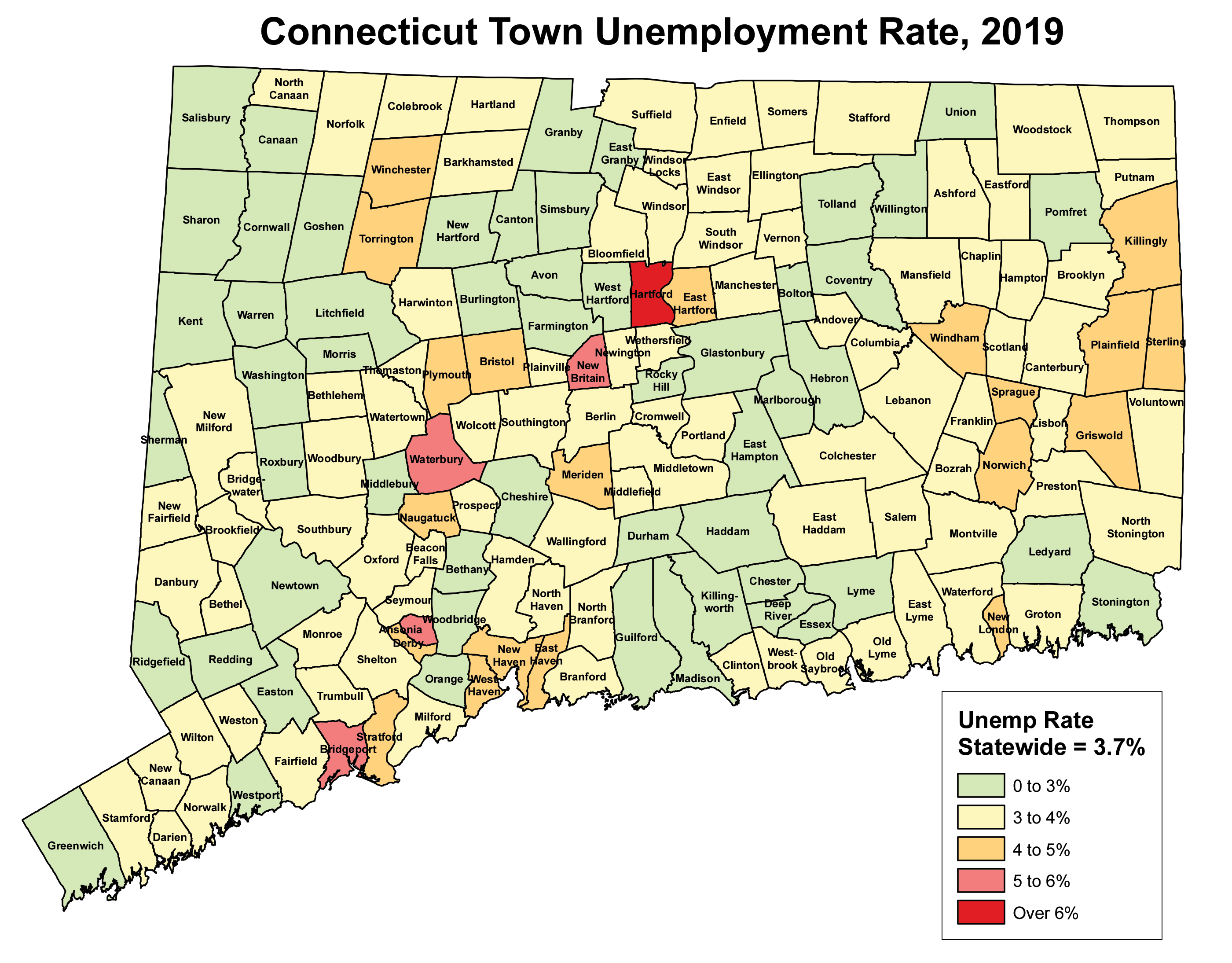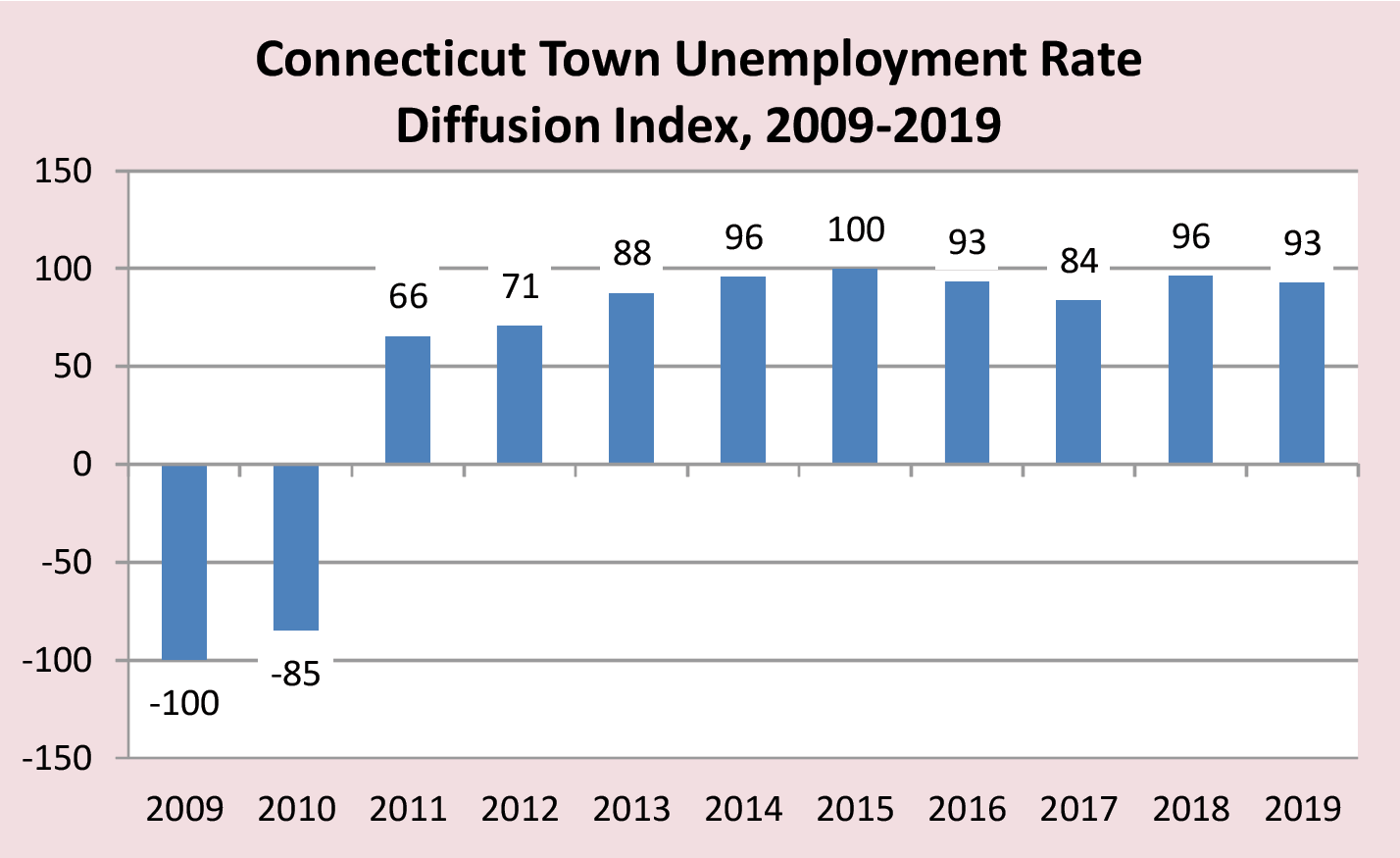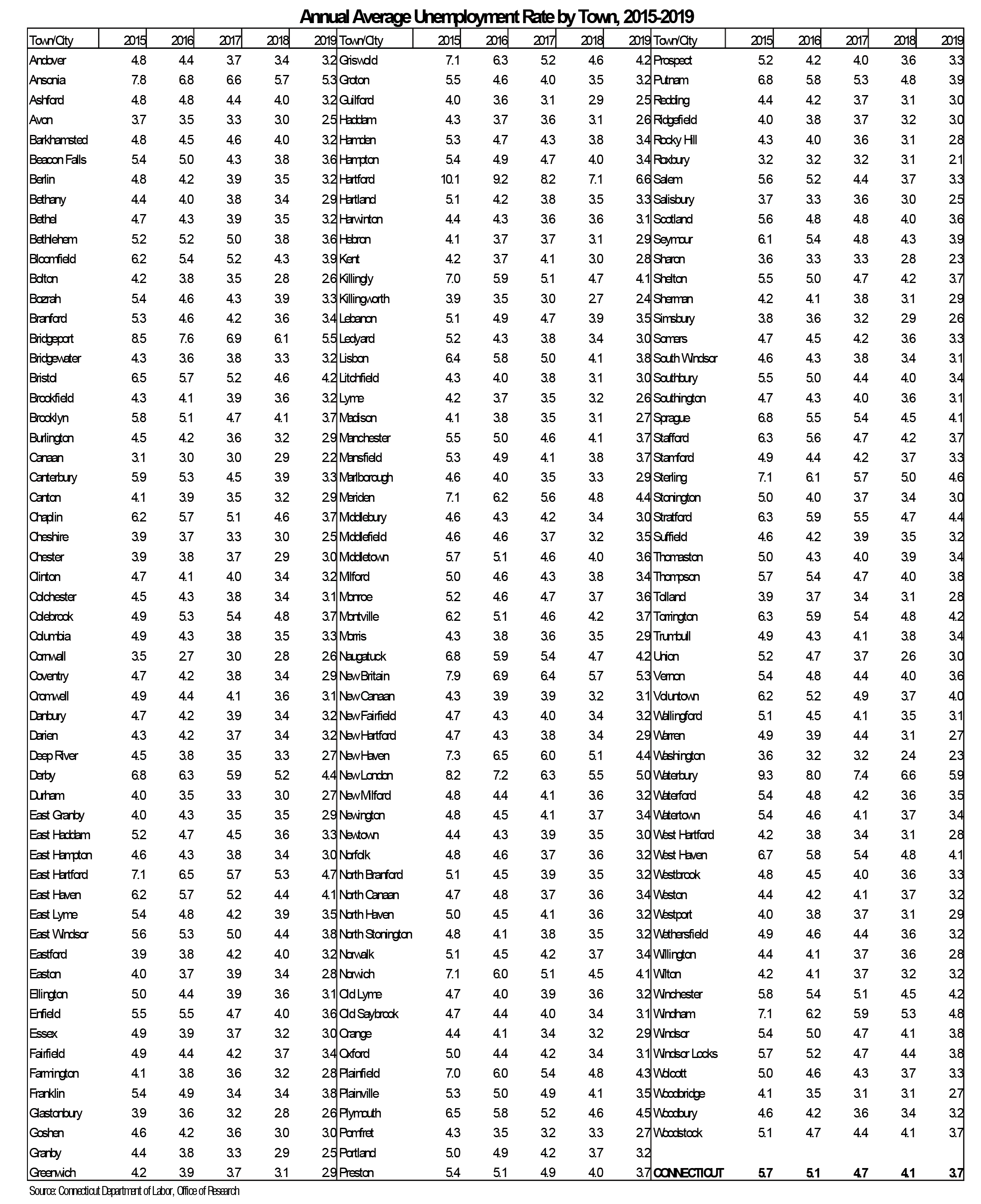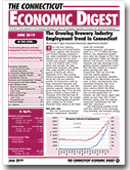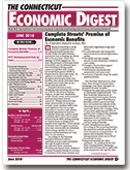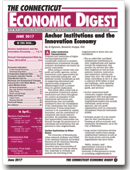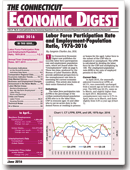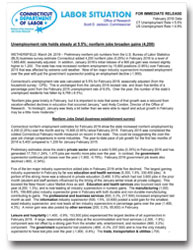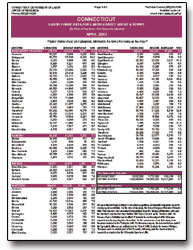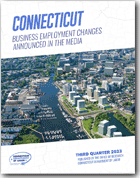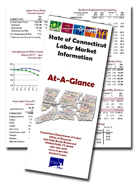2019 Unemployment Rate by Town
By Jungmin Charles Joo and Dana Placzek, Department of Labor
 n 2019, the annual average statewide unemployment rate was 3.7%, down from 4.1% in 2018. For the ninth year, most municipalities experienced a decline in their unemployment rate, although a little fewer than fell in 2018.
n 2019, the annual average statewide unemployment rate was 3.7%, down from 4.1% in 2018. For the ninth year, most municipalities experienced a decline in their unemployment rate, although a little fewer than fell in 2018.
2018 to 2019
Of 169 cities and towns in the state, the unemployment rate fell in 162, rose in 5, while 2 were unchanged in 2019. On the other hand, 164 were down, 1 was up, and 4 remained the same in 2018. Roxbury had the lowest unemployment rate of 2.1%, while the residents of Hartford experienced the highest rate of 6.6% last year (see table on page 3 for the complete town data). Overall, a total of 124 cities and towns had jobless rates below the 2019 statewide figure of 3.7%, 35 had rates above it, and 10 had rates equal to it. By comparison, 128 cities and towns had rates below the 2018 statewide average of 4.1%, 35 above it, and 6 were the same.
Of the five largest cities in the state with a 2010 Census population of 100,000 or more, Stamford had the lowest unemployment rate of 3.3% in 2019. Hartford posted the highest jobless rate among the large cities at 6.6%. All five cities experienced over-the-year unemployment rate decreases. The map on below also shows the unemployment rates for each town in 2019.
Town Unemployment Rate Diffusion Index
The Town Unemployment Rate Diffusion Index is calculated by subtracting the share of towns that experienced increases in their unemployment rates from the share that had rate decreases over the year.
As expected, during 2009-2010, the index values were negative, when Connecticut was in an economic recession. Last year’s diffusion index value of +93 suggests a slower rate of improvement in labor market condition across the towns than in 2018 (chart). However, town unemployment rates will undoubtedly rise significantly higher in 2020 due the impact of COVID-19 pandemic.
 |


















